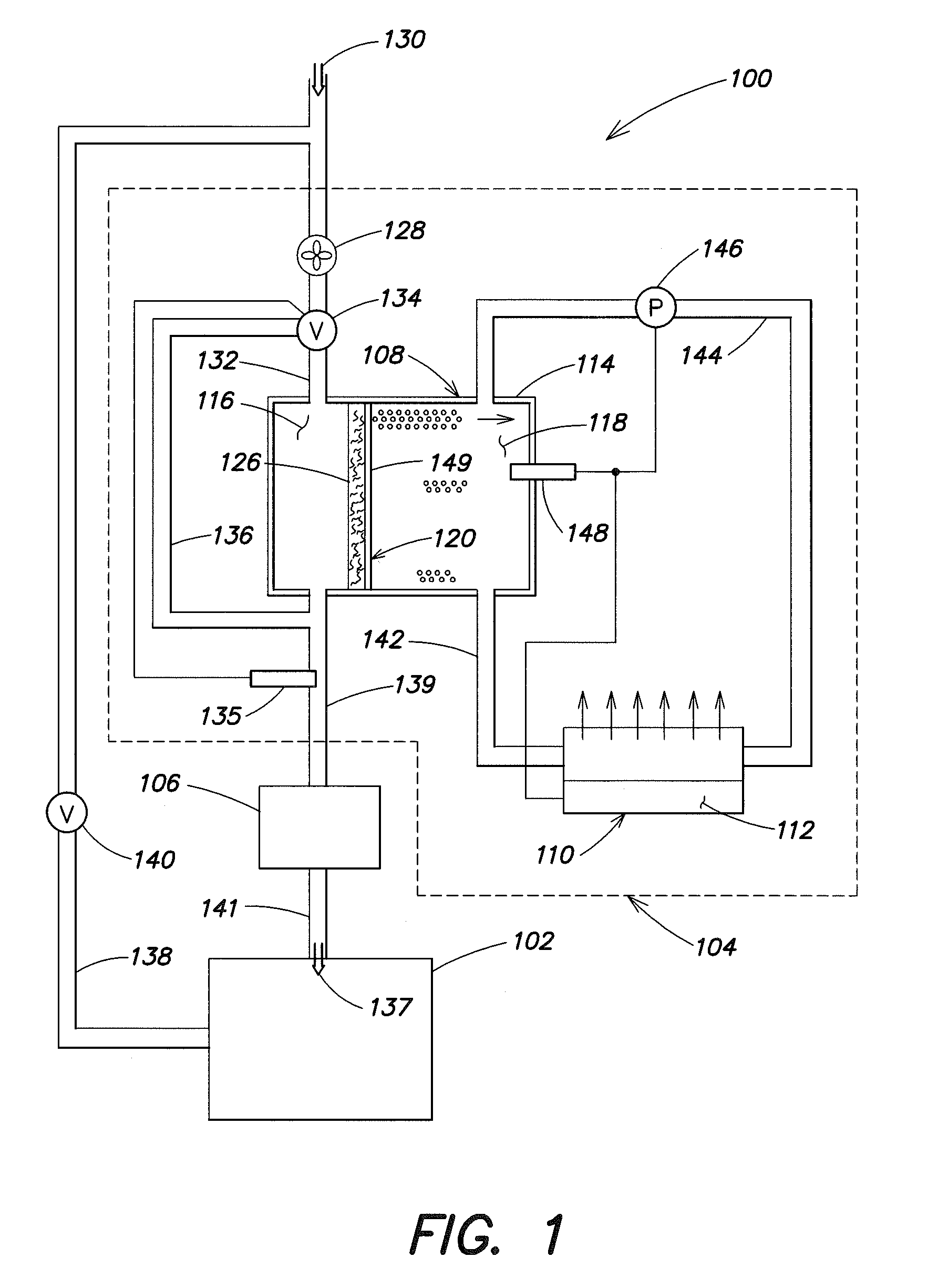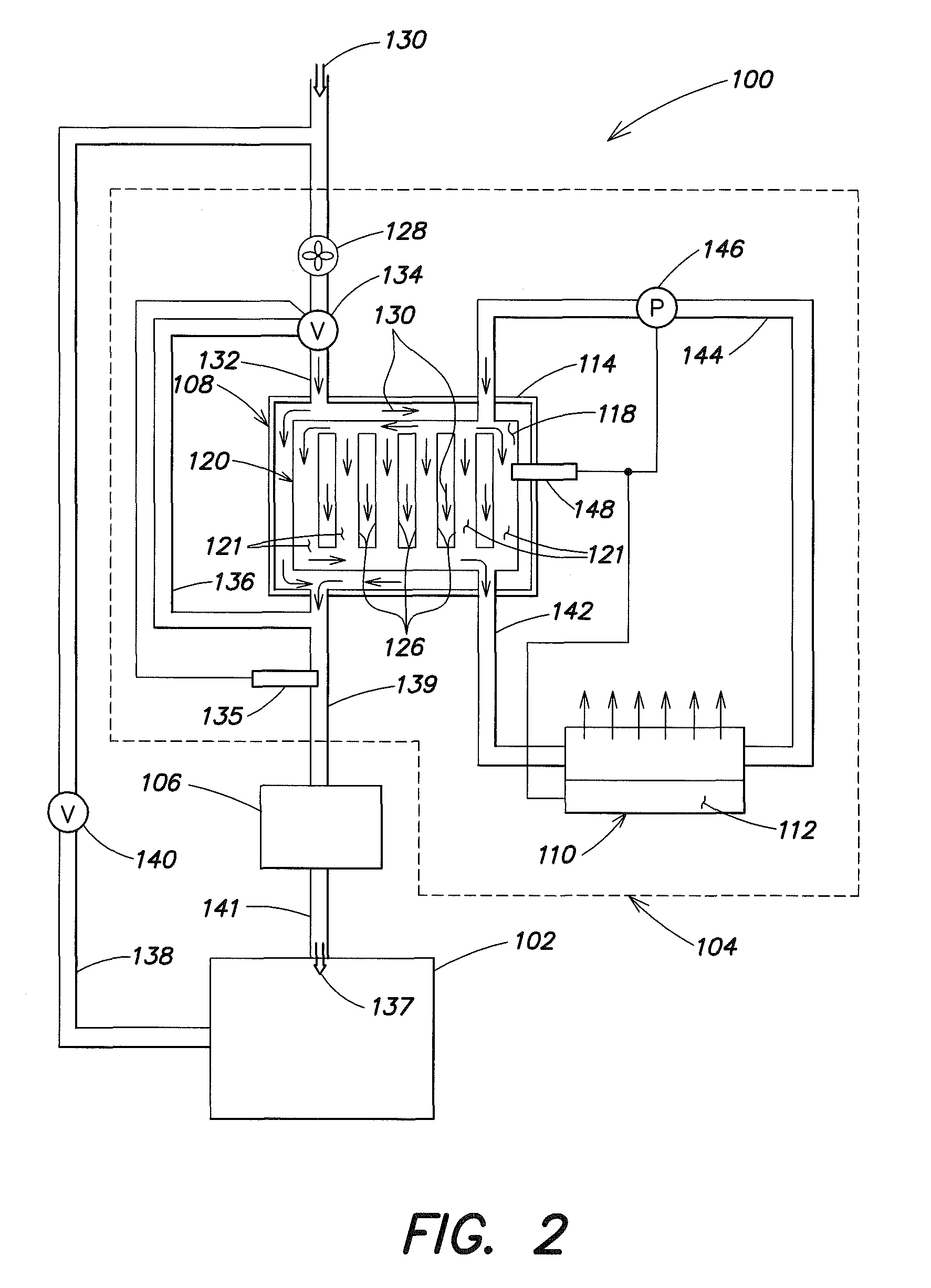Versatile dehumidification process and apparatus
a dehumidification process and gas stream technology, applied in the direction of lighting and heating apparatus, heating types, separation processes, etc., can solve the problems of inability of dx technology to maintain the air introduced into the interior space at the correct humidity and temperature for maintaining comfort, and inability to independently control comfort parameters. , to achieve the effect of enhancing the flux through the osmotic wall, the effect of improving the overall flux
- Summary
- Abstract
- Description
- Claims
- Application Information
AI Technical Summary
Benefits of technology
Problems solved by technology
Method used
Image
Examples
Embodiment Construction
[0029]FIGS. 1 and 2 schematically depict an air conditioning system 100 for conditioning the gas (e.g., air) within an enclosed space 102. The system 100 includes dehumidification apparatus 104 (represented by the components within the dotted line) and cooling apparatus 106. The dehumidification apparatus includes a dehumidifier 108 and an evaporator 110. In this embodiment the evaporator includes an auxiliary heater 112. The dehumidifier 108 is schematically depicted as an enclosure 114 divided into an airflow compartment 116 and an osmotic fluid compartment 118. The compartment 118 contains an osmotic fluid, which is water with a solute dissolved therein. The compartments 116, 118 are separated by a semi-permeable osmotic wall 120 comprising an osmotic membrane 126 as will be described below.
[0030]Before providing a more detailed description of the properties and characteristics of the semi-permeable osmotic wall and osmotic fluid, and the interrelationships between them, it is he...
PUM
 Login to View More
Login to View More Abstract
Description
Claims
Application Information
 Login to View More
Login to View More - R&D
- Intellectual Property
- Life Sciences
- Materials
- Tech Scout
- Unparalleled Data Quality
- Higher Quality Content
- 60% Fewer Hallucinations
Browse by: Latest US Patents, China's latest patents, Technical Efficacy Thesaurus, Application Domain, Technology Topic, Popular Technical Reports.
© 2025 PatSnap. All rights reserved.Legal|Privacy policy|Modern Slavery Act Transparency Statement|Sitemap|About US| Contact US: help@patsnap.com



